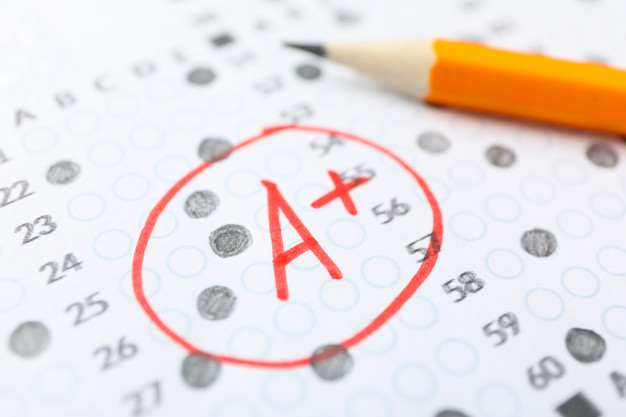What is SCAT Test?
The Center for Talented Youth (CTY) uses the School & College Ability Test (SCAT) as an entrance exam for students in grades 2 through 9. The Center for Talented Youth is renowned for nurturing and advancing gifted people before college.
The SCAT tests students one level above their actual grade, so for example- if your child is in the second grade, they would take the Elementary SCAT, which is intended to test students in grades 4-5.
According to the student’s grade level, the John Hopkins Center for Talented Youth offers accelerated programs to qualified students.
It might seem intimidating to your child because it is an exam one level above their grade level, but with enough practice and the right materials, your child will feel well prepared for it.
Let’s explore the structure & levels for the test in detail
Also Read: What is SCAT Test and How to Prepare for it?
Parts of the SCAT
There are 55 questions in each of the SCAT’s verbal and quantitative sections. 50 questions from each section of the test are graded, and 5 of them are experimental questions that don’t factor into the final score.
Each section must be finished in 22 minutes by the students. A ten-minute break is provided in between each section. Guessing is acceptable due to the lack of penalty for incorrect answers. Before making the best guess, ensure your child understands how to rule out answers that are incorrect.
- Verbal: The verbal portion of the test gauges your child’s vocabulary knowledge and verbal reasoning skills. In multiple-choice analogies, the student must select the most appropriate set of words to complete the analogy. Although it may seem as though more than one answer is appropriate for the analogy, the right response is that that best fulfills the comparison. Your child will need to have a powerful language, verbal comprehension, and knowledge/information abilities to perform well in this section.
- Quantitative: The quantitative portion assesses your child’s knowledge of the fundamental operations with numbers. A student must compare the two mathematical quantities to decide which is greater in the multiple-choice quantitative comparison questions. Problems don’t involve computation because they are designed to test students’ capacity for mathematical reasoning.
How is the SCAT Test Scored?
The scaled SCAT scores are determined by how many of the 50 scored questions in each section the student correctly answers (with the 5 extraneous ones thrown out).
A child’s raw score is scaled according to the test version, and then the results are compared to the test results of typical students in higher-level grades. Scoring is based on a three-step process. Since the founding of the Center for Talented Youth (CTY) in 1979, the percentile ranks for the SCAT have not been updated. The youngster is being contrasted with a representative national sample of kids who took the exam in 1979
Given the level the students can take, the SCAT Scaled Scores can range from 401 to 514. This is the range:
a. Raw Score: The total number of correctly answered questions out of the 50 scored questions is totaled to determine the raw score. A child would receive a raw score of 27/50 if they correctly answered 27 out of 50 questions, for instance.
b. Scaled Score: A common scaled score is created after the raw score has been determined. Administrators can properly compare different scores to one another thanks to this. According to the test version, scaled scores range from 400 to 514. A scaled score is used to compare a student’s performance to that of other students in the same grade level. SCAT Score Percentiles are the final scaling conversion.
c. SCAT Percentile: SCAT percentiles are used to assess academic performance and to contrast it with that of students in higher grades. Students take a test that is intended for higher grades because the SCAT is above grade level, and now the scaled scores are matched to the performance standards of students in advanced grades. For instance, the scores of second and third-grade students who took the Elementary SCAT version, which is intended for students in third through sixth grades, were compared to the norms for fourth and fifth-grade students, respectively.
Also Read: Preparing for SCAT – Top Tips for High Scores
What is a good SCAT Score?
The SCAT percentile determines what constitutes a high SCAT score. Here are some potentially high percentiles :
50th Percentile: Students with percentile scores in the range of 50 to 75 may be given consideration for gifted programs at their school. They might also be given consideration for talented programs at other institutions and schools. Some schools may also provide students with enrichment materials outside of the scope of the classroom to aid them in this score segment.
75th Percentile: The 75th percentile and higher require special instruction in the classroom. Students who achieve this mark are eligible for all the advantages mentioned above and can work with a mentor or tutor. Since they are regarded as gifted, instruction can be leveled appropriately for them. The 75th percentile of students is therefore exempt from having to adapt to the curriculum of their current grade; instead, they are free to look ahead and learn in accordance with their aptitudes rather than their age or grade.
90th Percentile: With excellent marks on both the verbal and the quantitative portions, a student achieves the 90th percentile and above. All of SCAT’s advantages at the school and CTY levels are available to 90th percentile students.
SCAT Test Prep at eTutorWorld
SCAT preparation necessitates a thorough understanding of the subject matter as well as the exam structure and time management.
You can support your child by setting up a suitable practice schedule and giving them the necessary equipment. Consider enrolling your child in eTutorWorld if you’re unsure how to balance the SCAT curriculum only with the school curriculum. We provide SCAT test preparation for students in all grades using highly qualified tutors and a carefully thought-out, individualized lesson plan.
Visit our website right away to learn how we can help prepare your kid for SCAT.

Cynthia Thompson
Cynthia Thompson is a school teacher from North Carolina. She believes that accessibly written academic content is critical, and writes it in her unique style to educate the next generation of American school children. Read More


